
Carrara is situated in one of Courchevel’s most iconic luxury hotels, Les Airelles
LUX correspondents are based around the world, and our other staff travel on a regular basis. Here are some of our favourite culinary destinations
Carrara, Les Airelles, Courchevel
At the next table, which wasn’t really a next table because it was a couple of miles away, such is the setup of the Carrara restaurant at Les Airelles, a couple were finishing their meal just as we sat down for ours. He had the look of an heir to an old-money European fortune, bespoke Brioni loafers and a Cifonelli blazer. She, animated, flicking her hair, not much younger than him but dressed for a ball. They left around a third of their bottle of Chateau Latour, and probably another quarter of the bottle was sitting in their glasses as they rose to leave. Depending on the vintage, which we couldn’t quite make out (distance between tables, and all), that could be thousands of euros of wine casually left aside.
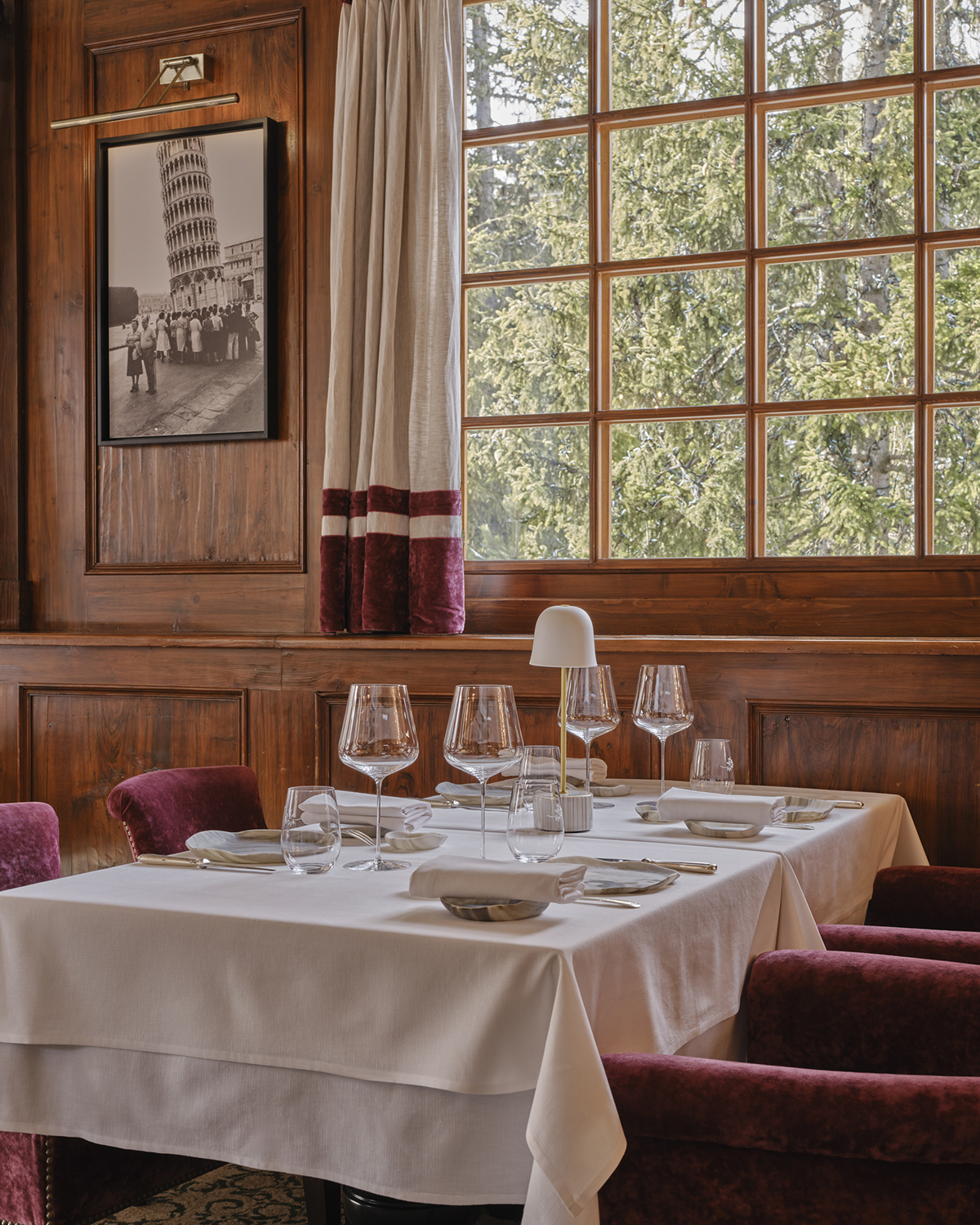
Carrara offers an immersive transalpine gastronomic experience
That’s the kind of place Carrara is: huge comfort for the hugely well off. Big red velvet chairs are as relaxing as rocking chairs after a day’s skiing (or a day spent dining at La Soucoupe). White tablecloths and the kind of serene yet highly organised service seen only in classical European hotels gives an extra feeling of comfort. We didn’t go for the Latour, but started with an equally impressive Louis Roederer Blanc de Blancs 2010. The cuisine at Carrara is described as a “tour of Italy” and you could indeed choose from an array of Italianate dishes as classical as Michelangelo’s David. Mediterranean tuna with oscietra caviar and seared scallops wth basil vinegar were limpid starters, better in the execution, with very high quality vivid ingredients, than in the description.
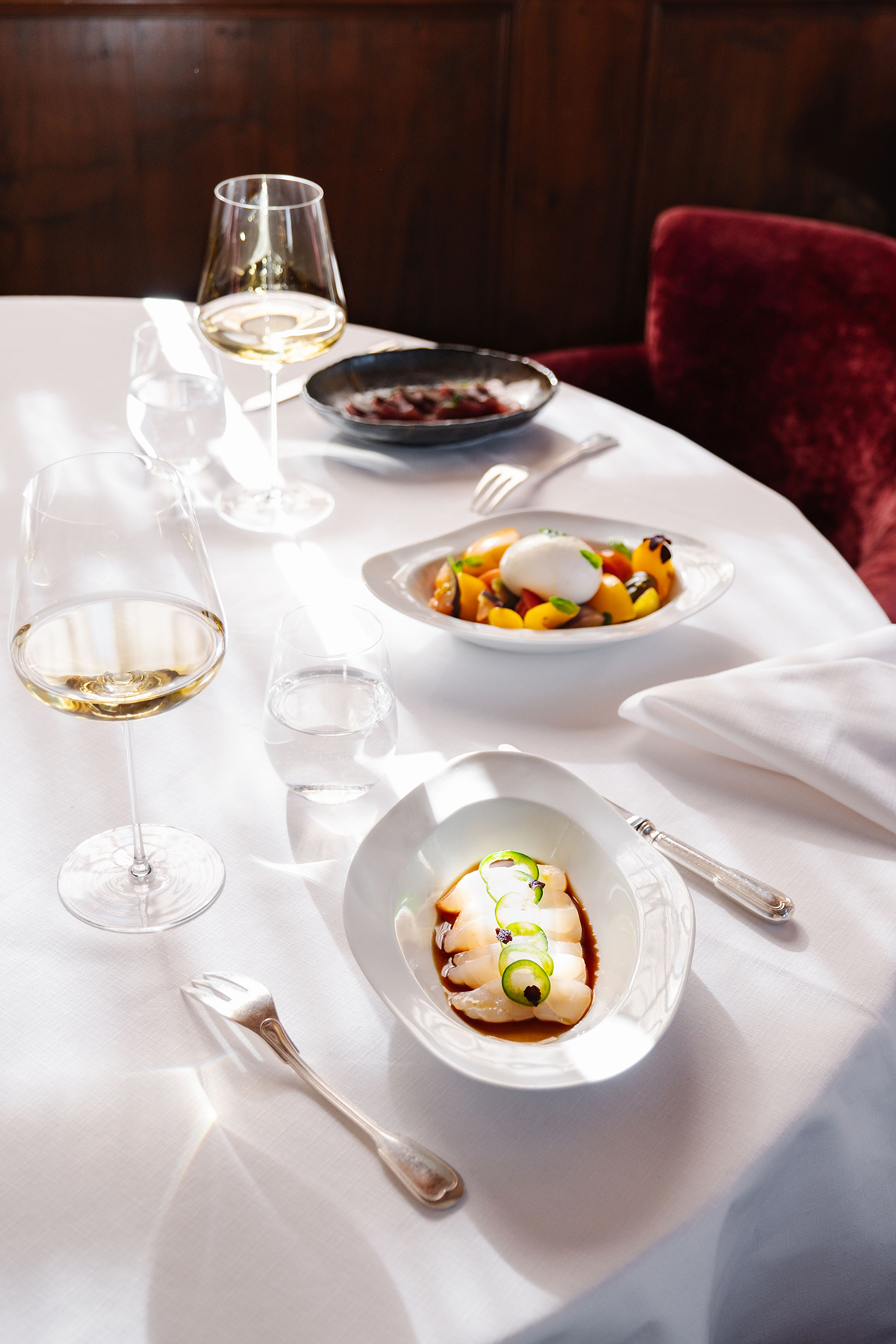
The food is not only Italian but a blend of Mediterranean flavours
Sticking with the seafood as it was so good, despite us being 1900m up in the mountains, we moved on to a shared clam orchiette, clams bulbous and feelsome. Sea bream with sautéed vegetables is a summer-in-Porto-Cervo dish that works equally healthily in the Alps; herb-roasted free range chicken breast in a kind of calzone was original and more hearty, accompanied by some volcanic Sicilian red wine. Desserts looked historic but were not feasible; portions are hearty.

Marco Garfagnini is head chef at Carrara
Carrara is an intriguing blend of comfort food and clean, California-style Italian: clearly a place that knows its clientele. Across from us, a well known business leader from London was celebrating a birthday with his family. They were at ease, as were the staff serving them. We didn’t want to leave Carrara; unlike some establishments in Courchevel, you have to check your brashness in at the door, relax, and, as long as you can afford it, chill out. A lovely combination of old and new world Italian, right on the most famous slopes in the world.
Find out more: airelles.com/restaurant-carrara
CUT by Wolfgang Puck, 45 Park Lane, London
Glamour is the number one ingredient in many types of fine dining these days. Sure, there are no tablecloth Scandi caverns of cool where foraging minimalism and sustainability are the key components; but many people spending a small fortune on a meal just want glamour, not grass. The question is, how do you create glamour? Plenty of expensive feeling restaurants are not glamorous, and a few vice versa.
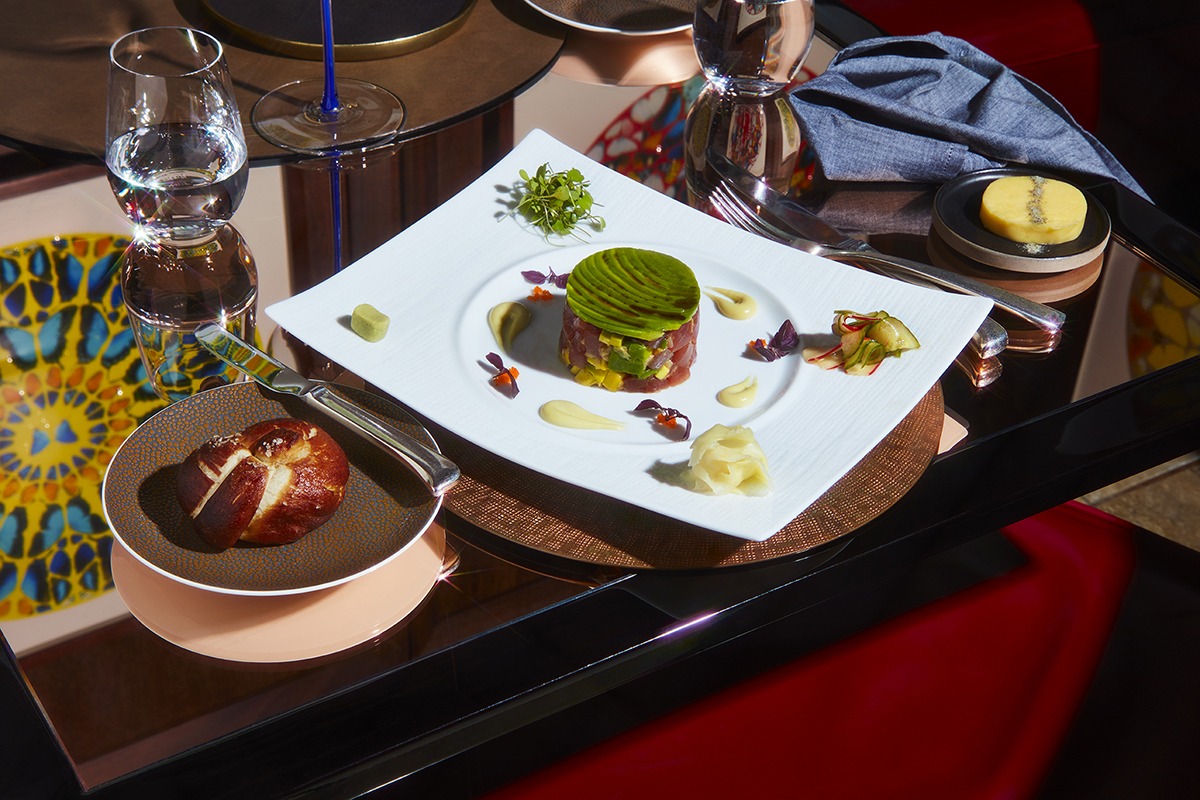
CUT was opened by Wolfgang Puck in 2011
Wolfgang Puck’s CUT on Park Lane in London has it all, the moment you walk in. We attended a kind of soft relaunch of this London icon recently with Puck himself in attendance. It may be a hotel restaurant, but the moment you sweep in past the Damien Hirst‘s and sit down you feel a million dollars. The light wood panels, gold lighting and curtains and elaborate Venetian chandeliers, appearing like sea anemones at intervals along the ceiling, give it a kind of modern-Versailles hauteur.

CUT is located in 45 Park Lane which is owned by the Dorchester Group
During our visit, owner and restaurateur extraordinaire Puck was there himself, patiently going round all the tables greeting diners. Puck himself is glamour personified in a chef: and he seemed far more enthusiastic talking about art (Andy Warhol and Roy Lichtenstein were early collaborators) than talking about cuts of steak. Artists collaborated with him on his first menus, and he retains an interesting balance of Mitteleuropean grace (he is originally from Austria) and the go-getting, art-culture edge of his adopted homeland in the US.
As does his menu. CUT is primarily all about beef, and where else can you have a tasting of the same cut of three different types of beef, simply presented and gorgeously cooked? Each one of the Tasting of New York Sirloins (USDA Prime Black Angus, Japanese Wagyu, Australian Wagyu) was fascinating, changing in character the longer it rested on the plate, as did our order of preference. Perhaps surprisingly our ultimate favourite was the Australian: delicate yet piercing in flavour.
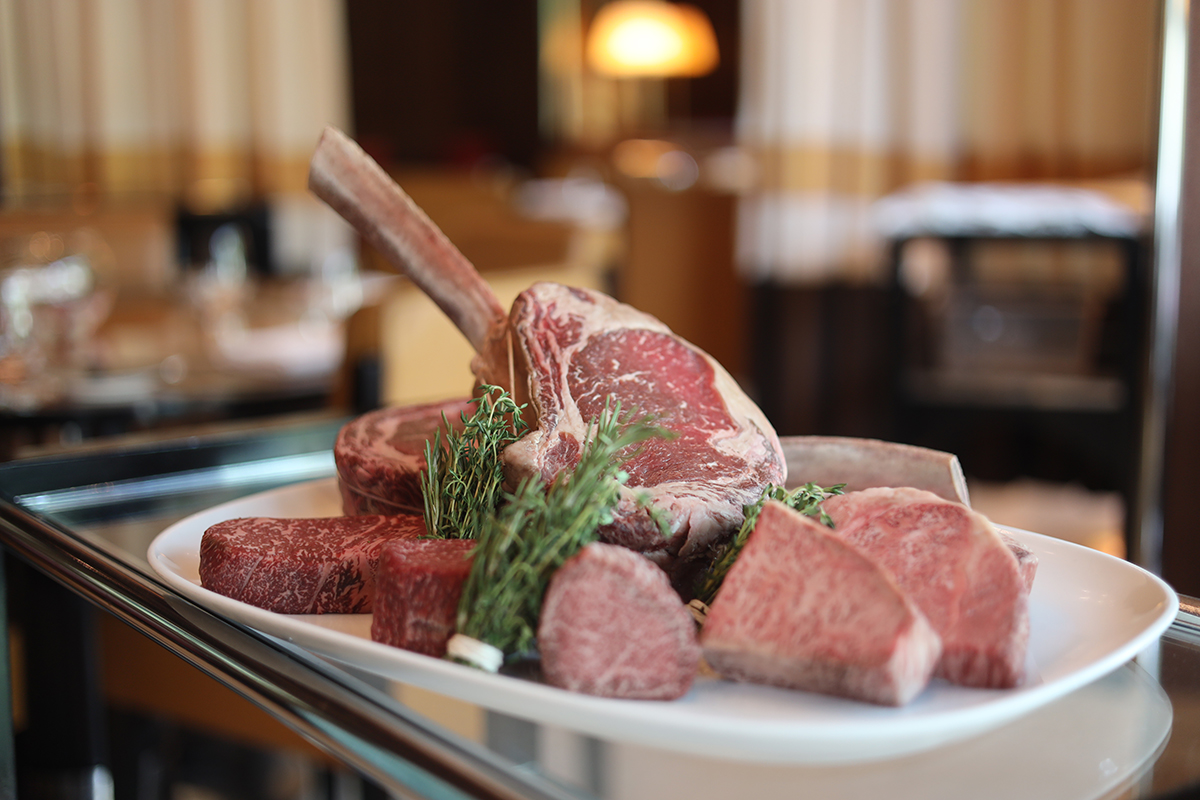
The menu offers the widest selection of Wagyu beef in London
Perhaps strangely, given the nature of the restaurant, the raw and chilled seafood section of the menu had proved just as memorable. Raw seafood is all about preparation and extreme subtlety, and the chefs proved that they can master both with the bigeye tuna tartare, tosa soy, ginger and wasabi aioli; and also the yellowtail sashimi, black ponzu truffle and pickled wasabi.

Elliott Grover is now the executive chef at CUT
The greatest meals are ones which seem to proceed in phases: the warm, elegant entry, thoughtful taking care of the order, a wait of just the right period between courses, lights dimming slightly as the evening progresses, the atmosphere, more intimate yet still lively. CUT had it all. It’s not cheap, but true glamour never is, and even in a city and area (Mayfair) full of some of the worlds greatest restaurants, it stands out. Some high-end restaurants are ultimately not worth the price as they charge. This one certainly is.
Find out more: www.dorchestercollection.com/cut-45-park-lane
Al Nafoorah, Jumeirah Al Qasr, Dubai
In the rambling, animated and increasingly glamorous metropolis that Dubai is becoming, sometimes you need a break. So it was with an increasing sense of relief when we stepped down the stairs of the palatial Al Qasr hotel, near the beach, walked through a calm high ceilinged restaurant swathed in Mediterranean colours, and were seated at a table at the edge of a long terrace overlooking trees, gardens and what at first we thought was a swimming pool and then realised, in the evening light, was a waterway. Beyond, more trees and night time birdsong with spots of lighting illuminating the dark parkland.

Al Nafoorah is located in Dubai’s Palm Jumeirah
Al Nafoorah is a Lebanese restaurant, and in a country where nobody is quite what they seem, it was even more refreshing to discover that the manager, both bustling and friendly, is Lebanese himself. We immediately established ourselves as customers to be remembered (hopefully for the right reasons) by asking if they had any Lebanese pickles to go with the assorted cucumbers and carrots they had put on the table as a refreshing meze pre-starter. Another staff member wandered past offering me Shisha (we declined) and after a glass of 2020 Chablis by Domain Laroche (not Lebanese, but very apposite in being a refreshing yet fleshy white Burgundy) we felt 1000 miles, not one mile, from the hubbub of downtown Dubai.
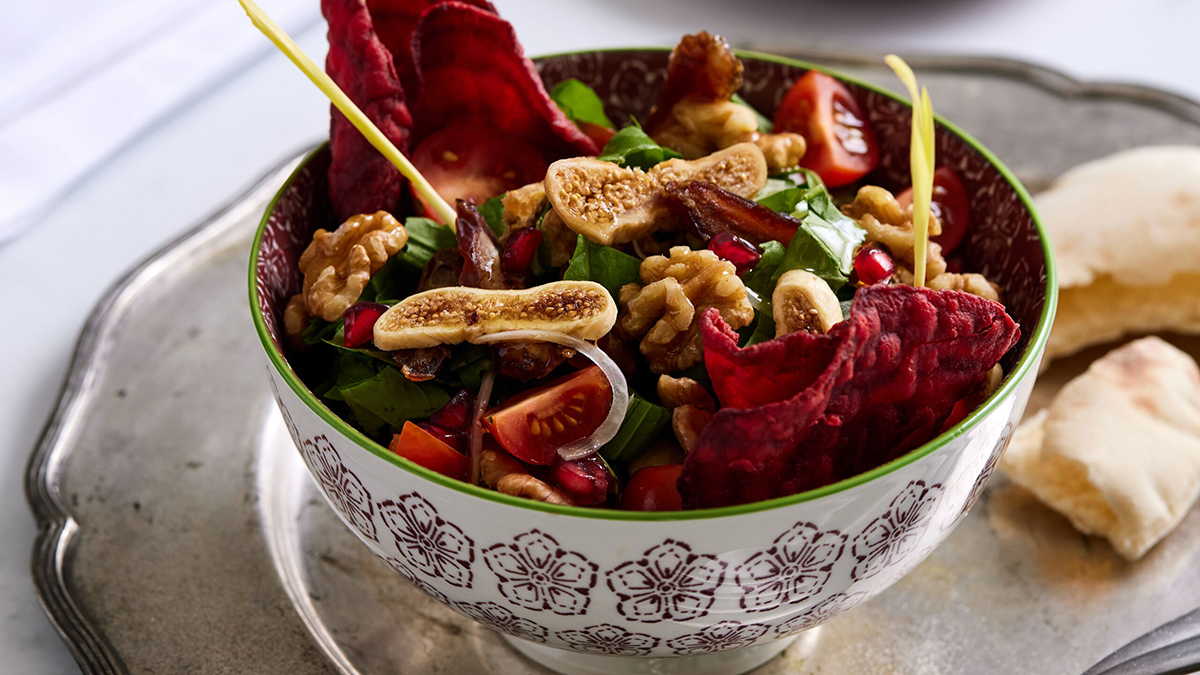
The restaurant is inspired by the Berdawni Riviera, known as the ‘city of wine and poetry’ in Lebanon and is headed by chef Ali Fouad
The menu is a panoply of Lebanese classics and it’s probably best explored with a group to be able to try all the sharing options. For example, it would be ideal to dip into a table of fattoush, moutabal and jergier – all variations of salads and vegetables in various sauces – rather than ordering just one as a starter. As it was, our fattoush salad starter, in a delicate pomegranate dressing, provided further refreshment in the warm evening, and after a little debating about whether we should go for the possibly more typical Lebanese lamb dishes, we opted for a whole seabass main course, plain grilled, with a side of taboulleh and steamed vegetables – not conventional Lebanese food as we know it, but light and healthy and very nicely put together.
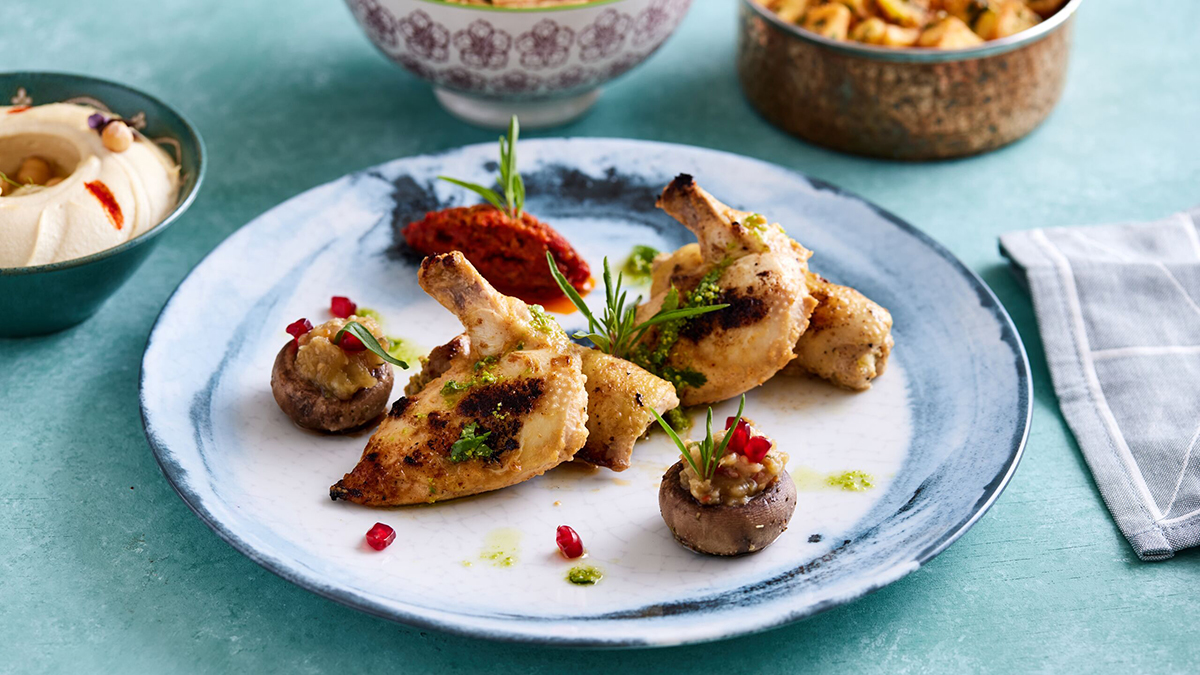
The restaurant is both artistic and nostalgic in style, embracing Beirut’s cosmopolitan feel but also Lebanon’s more historic culture
The heat of the evening was finally dissipating as we ordered dessert, in our case single scoops of home-made raspberry sorbet, surprising and delightful for not being too sweet.
We went for a wander along the waterway and in the gardens and then departed to a smiling wave from the manager, feeling ready for the rigours of Dubai again the next day.
Find out more: www.jumeirah.com/dubai/al-qasr-al-nafoorah
Chotto Matte, London
Readers who know Chotto Matte from its other locations described it to us as “Nobu with a vibe”, and while we were not sure that was how the owner of the group, Kurt Zdesar, would have described it, it seemed tempting enough. The latest branch of this international group is in Marylebone, a genteel part of London more known for its affluent young families and private clinics than for its vibe, but Chotto Matte is one of a number of newcomers starting to define the area as a culinary destination. You certainly appreciate the restaurant’s design and concept as soon as you walk in from Paddington Street: it’s a theatre of art and design, and a big feature bar at the back, a horseshoe design so smart that you have to overcome the temptation to perch there all evening and ask the bartender to dream up variations on Martinis.
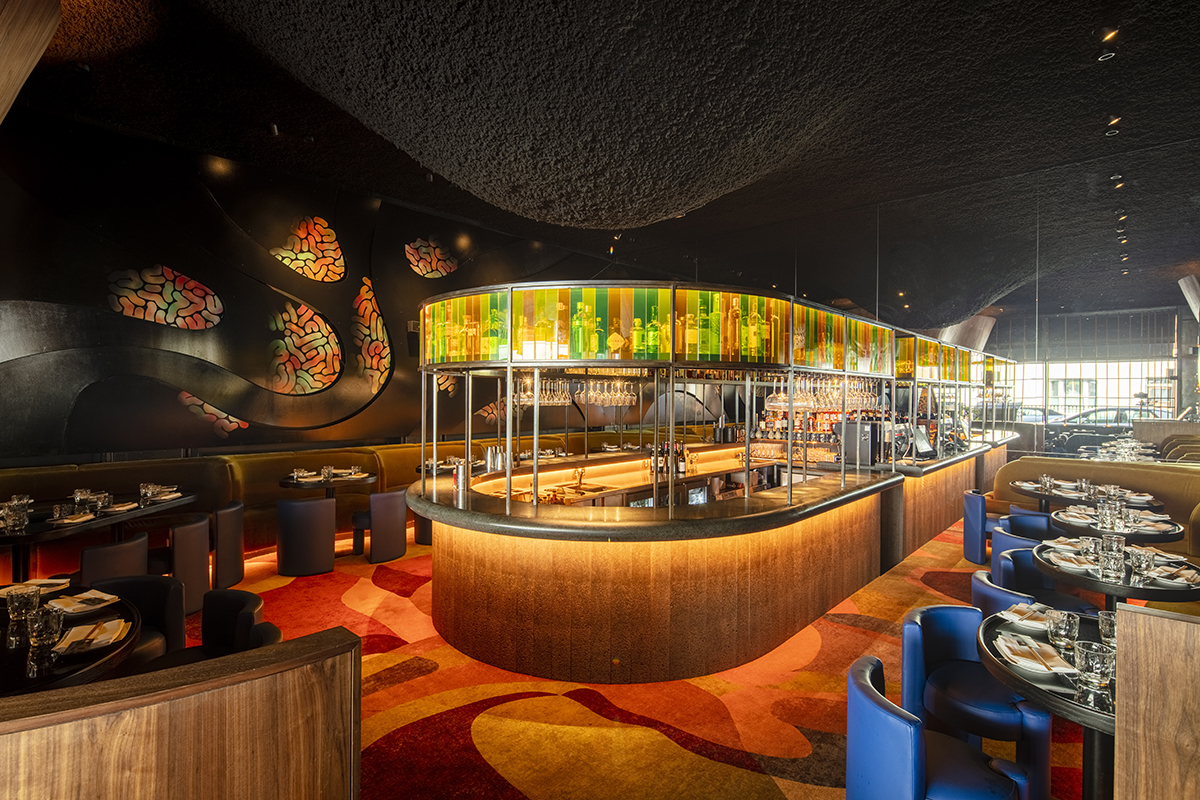
There are two Chotto Matte restuarants in London: the first opened in Soho and the second restaurant has now opened in Marylebone
The menu is also a work of art, contemporary in style and concept. Starters include Redefine Meat Gyoza, El Jardin Maki and BBQ Huacatay Broccoli: in fact all the starter concepts were so tempting we were slightly lost. So, kudos to our server for suggesting she put together a compilation of the best of, although perhaps in future the restaurant can be reminded there can be a tad more customer input. Enthusiasm about star dishes is excellent, but customer choice needs to be balanced (we don’t eat lychees, for example).
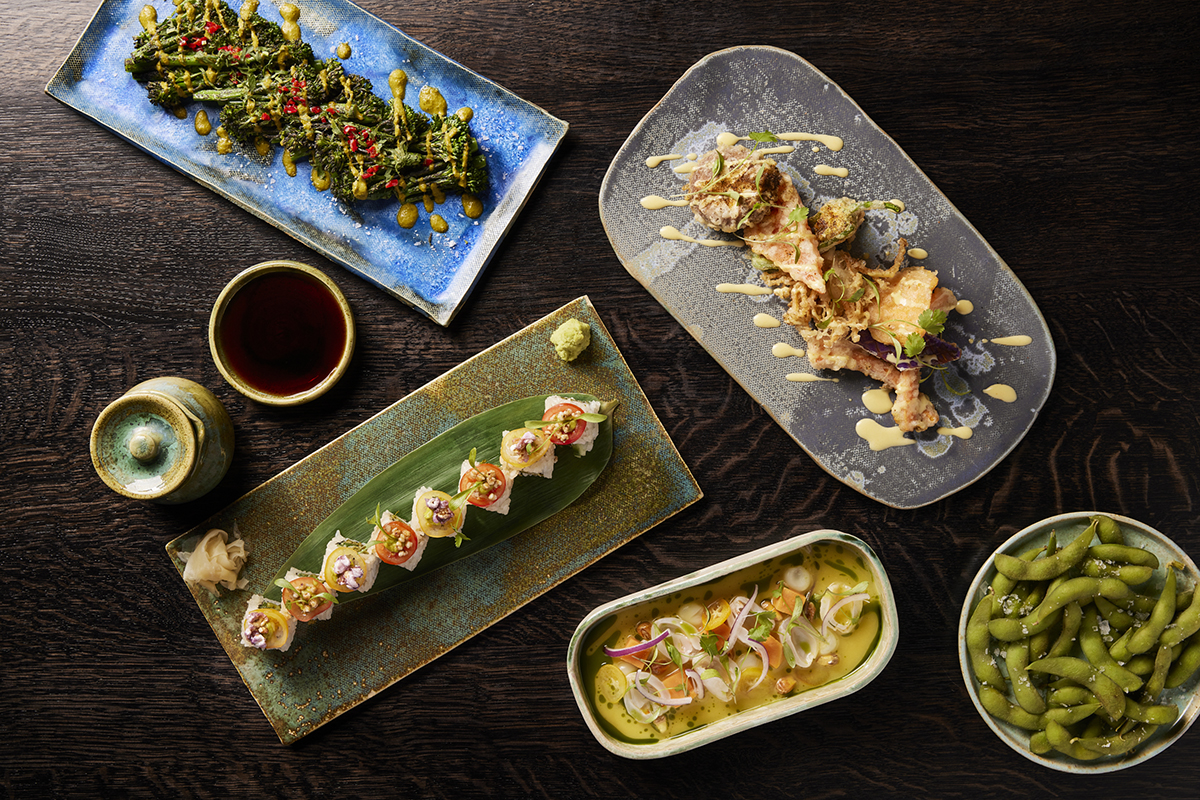
The executive Chef at Chotto Matte is Jordan Sclare. Before joining Chotto Matte, Sclare opened Buddha Bar in London
What emerged as starters was delicious, trim, healthy, poignant in flavour; and then it all kept on coming. The spicy tuna with crispy rice? A memorable signature dish, as good for breakfast as dinner. BBQ mushroom salad and pollo piccante were also memorably vivid. Seabass tempura was merely good, in comparison, while the black cod aji miso was an original dish and split opinion: some preferred it to the Nobu version, some did not, but quality was undeniable. In the end, a restaurant can be remembered for one memorable signature and the spicy tuna has it all.
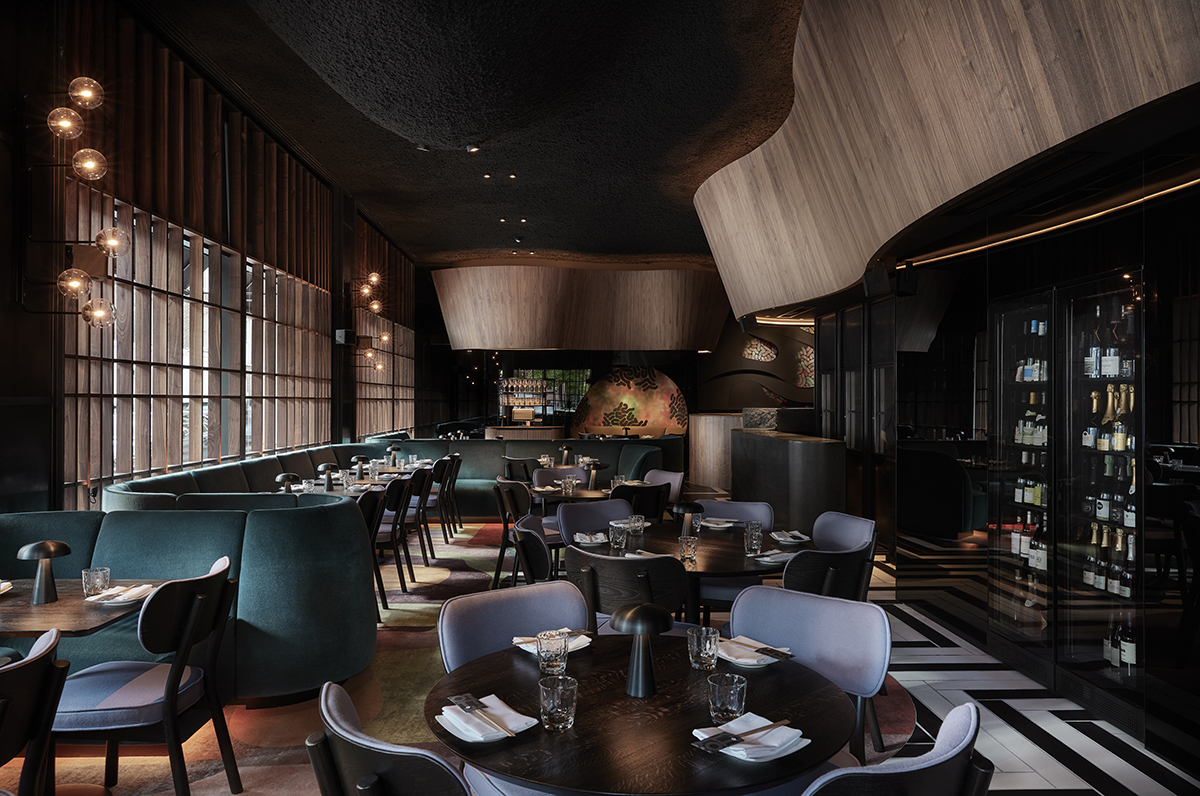
Kurt Zdesar is the founder of Chotto Matte which is part of NZR Group
Chotto Matte is proud of its pisco sours, which are offered on arrival as other restaurants might offer water or prosecco. These were pretty good, with a satisfying crema to sip through. But the restaurant’s wine list, probably underexplored due to the cocktail bar vibe throughout, is memorable. A beautifully selected array of specialist champagnes (which would match the clear, bright and clean flavours of much of the food) as well as some world-beating white and red wines. And we didn’t even try the martinis. Credit to Zdesar for enlivening the London restaurant scene with not one but two of these sites – the other, in Soho, has a guaranteed vibe due to its location, but Marylebone is trying hard and so far, succeeding nicely.
Find out more: chotto-matte.com
Sumosan Twiga, London
Glamour is out. Barefoot, or bare table, style is in. Ritzed-up instagrammers clumping together around flaming magnums of champagne on the Cote d’Azur have been replaced by pared-down TikToks of imperfect ceramic plates of foraged plants in Oslo. That’s a conclusion you might be justified in drawing on looking at current social media food trends.

Alessandro Ristori & The Portofinos performing at Sumosan Twiga. Photograph by Dominic Martin
So it is both refreshing and surprising to walk into Sumosan Twiga in Knightsbridge. A DJ plays house tunes in the centre of the floor. Booths of highlighted highlifers dance, eat, drink and video, simultaneously. There’s a serious vibe, even on a Wednesday night. It’s also quite private: you have to get past the receptionist, into a lift, and up two floors and past another receptionist.
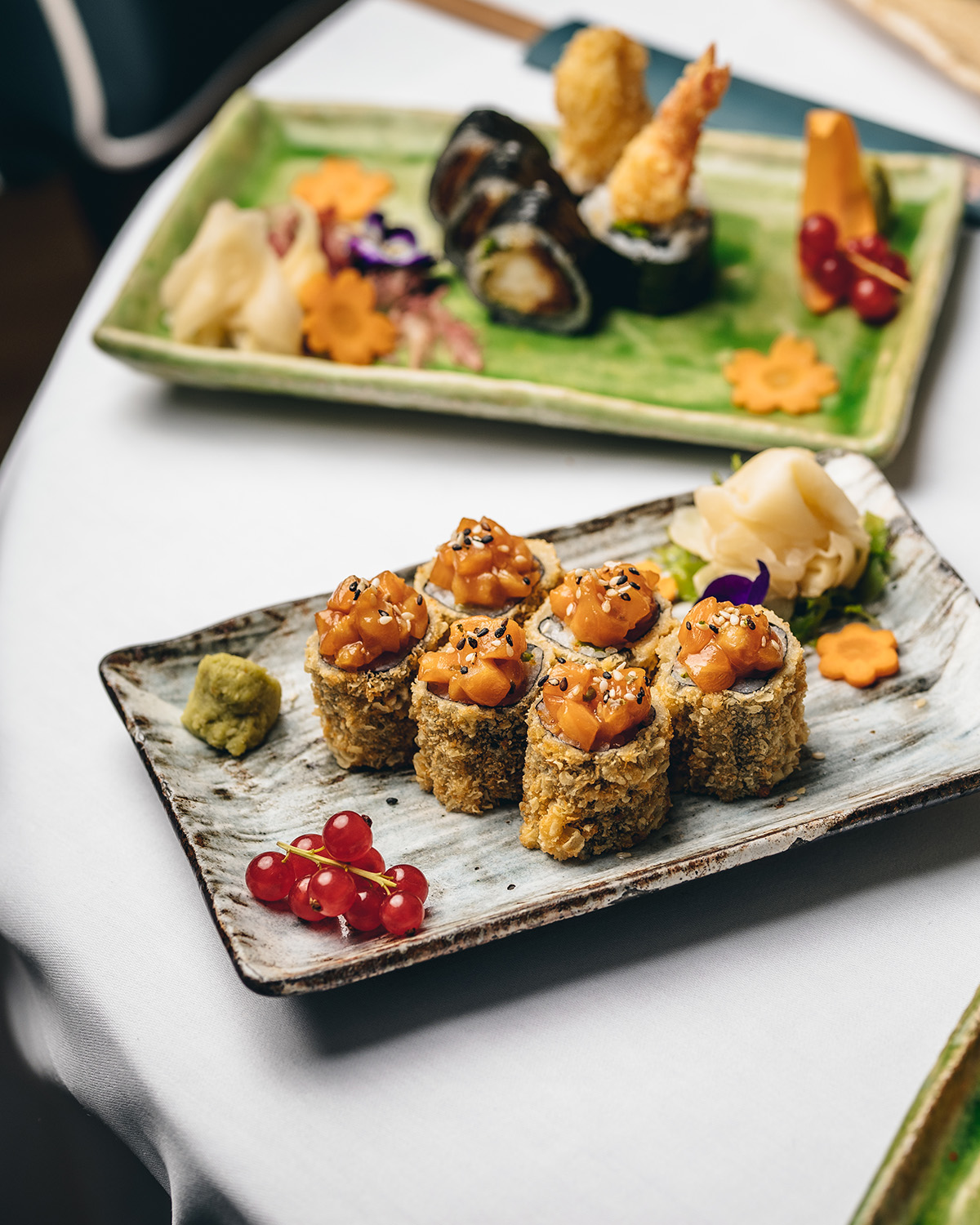
Isobe Maki
Some of the vibiest places compromise on food. Sumosan Twiga serves parallel menus of Italian and Japanese, which shouldn’t work, but it really does. The Raw Bar offers nigiri, sashimi and maki rolls. Our buba roll (seabass, cucumber wasabi tobiko, jalapeno) was more than the sum of its vivid, intense ingredients. Spicy scallops and orange tobiko were curiously mesmerising.
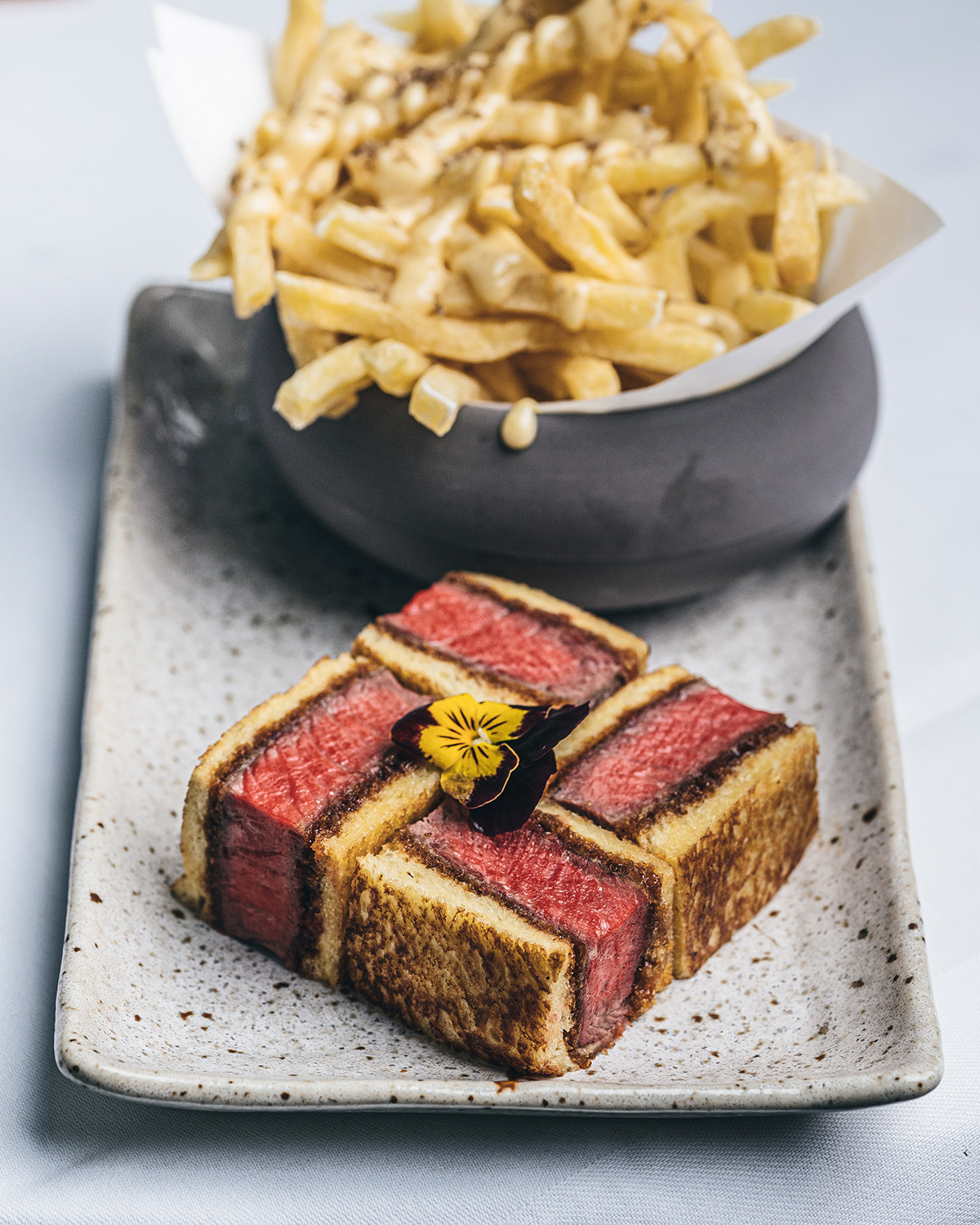
Wagyu sando sandwich
You have to be careful not to over-order. Off the “Italian” menu (which is not that Italian, but probably all the better for it), we had seabass ceviche, again intense and crisp in flavour, no disguising with heavy sauces, and not too thickly sliced) and Kobe beef sliders which were as wonderfully rich and well formed as our fellow guests.
Those guests were getting livelier all the time, but the restaurant has enough space that nobody’s in your face. You could go on a date and be unfazed by the partying tables.
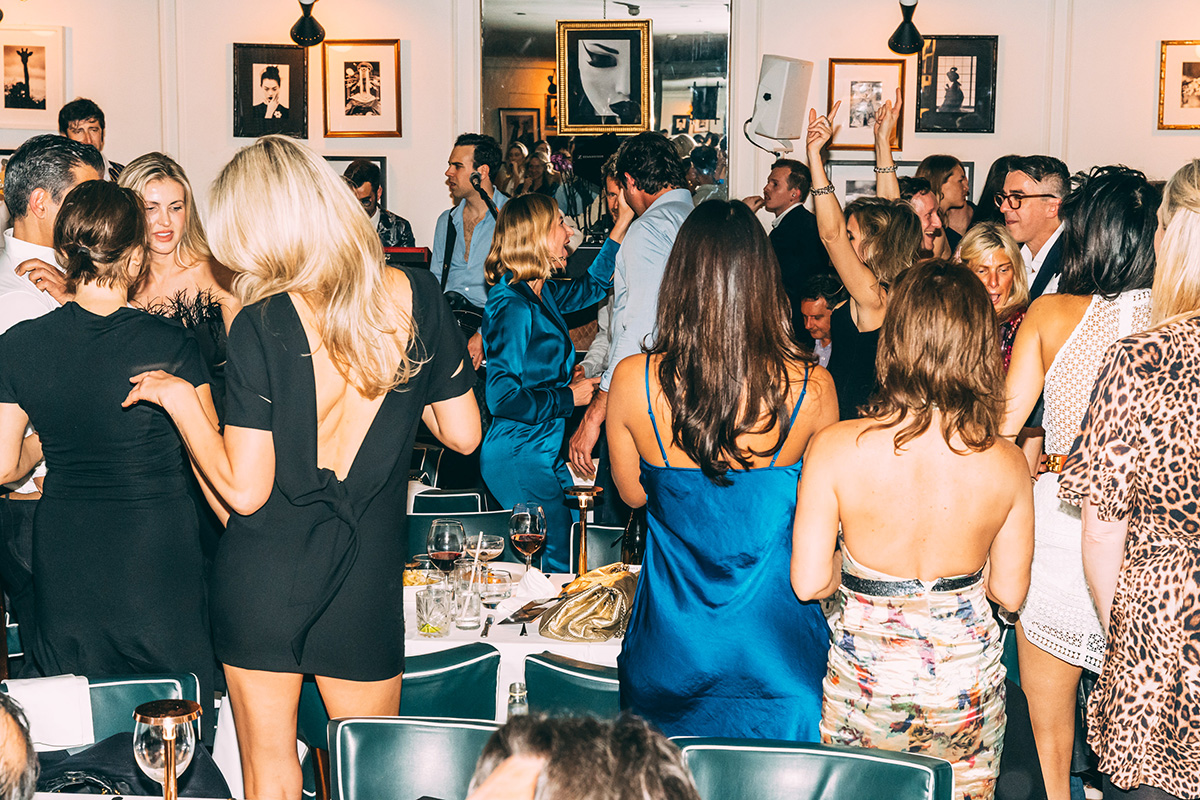
Wednesday live music at Sumosan Twiga. Photograph by Dominic Martin
As for the mains, it’s pretty astonishing to be able to deliver a Wagyu sando sandwich, a kind of uber-glamorous burger, and a comfort-food tagliatelle alla bolognese (we like that they don’t even try to call it “ragu”, the Italian way), each of the best possible quality. This kind of food just doesn’t get better; you’d pay Sumosan Twiga prices to have it delivered to your room, even without the vibe. And the vibe just got vibier as midnight approached.
Sumosan Twiga knows its market very well, and then delivers even more than what they expect. It’s a smart formula. It ain’t a repurposed wooden table at a silent restaurant in Copenhagen, and it doesn’t try to be. The world is, after all, a diverse place, and this is a joy.
Find out more: twigaworld.com/sumosantwigalondon


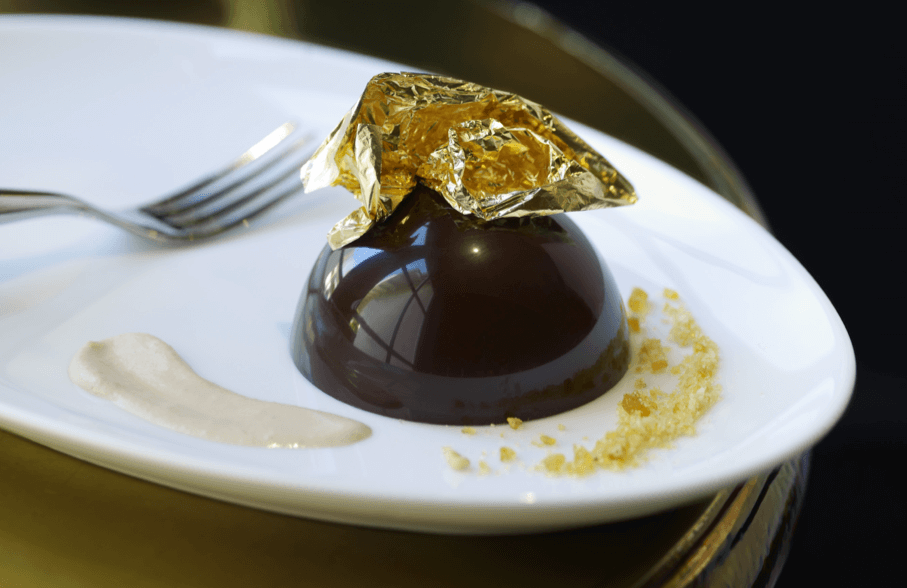









Recent Comments